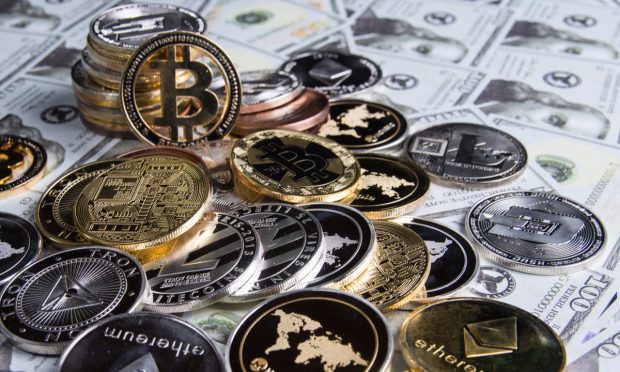Inside the Push to Draft Globally Consistent Stablecoin Regulation

Whatever shape countries’ stablecoin regulations finally take will be heavily influenced by several influential international financial organizations that have been encouraging countries to do two things: Act together and act fast.
On May 20, the G7 Finance Ministers and Central Bank Governors Meeting called for “swift development and implementation of consistent and comprehensive regulation of crypto-asset issuers and service providers.”
The core goal, it added, is to hold “crypto-assets, including stablecoins, to the same standards as the rest of the financial system … following the principle of same activity, same risk, same regulation.”
In large part that’s because a “stablecoin that enters the mainstream of the financial system and is widely used as a means of payments and/or store of value in multiple jurisdictions could pose significant risks to financial stability in the absence of adequate regulation,” said the Financial Stability Board (FSB) in July.
It is one of the three main international organizations pushing for stablecoin regulation as soon as possible, even ahead of broader cryptocurrency regulation, after the early May collapse of the Terra/LUNA algorithmic stablecoin ecosystem, which saw $48 billion in investments disappear after a week-long run. This also led to a wave of bankruptcies by crypto lenders.
See here: Stablecoin Collapse Heightens Calls for Crypto Controls Worldwide
Along with the FSB, established by the G20, there is the Bank for International Settlement (BIS), and the Financial Action Task Force (FATF), whose recommendations have the most teeth. However, the FATF recommendations won’t be released until October.
Read more: A Primer on US Stablecoin Regulations
Read more: A Primer on EU Stablecoin Regulations
Read more: A Primer on Asia-Pacific Stablecoin Regulations
Here’s a look at some of the regulatory recommendations they have made, and are pushing governments hard to implement — something that includes working together:
Financial Stability Board
The FSB’s July release began with the Terra/LUNA collapse, warning that “the failure of a market player, in addition to imposing potentially large losses on investors and threatening market confidence … can also quickly transmit risks to other parts of the crypto-asset ecosystem.”
See here: FSB Tells National Regulators to Move Faster on Stablecoin Regulation
Arguing that the stablecoin version of a bank run, it warned that crypto-asset markets are intrinsically volatile and structurally vulnerable, and are growing more and more interconnected with the traditional financial system. A crisis in stablecoins, the FSB said “may have spill-over effects on important parts of traditional finance such as short-term funding markets.”
While rules are being put in place, it said, the crypto-asset market should be overseen by existing regulators, on that “same activity, same risk, same regulation,” principle.
In an October 2021 report on global stablecoins (GSC) — the kind it is most concerned about — the FSB made 10 high-level recommendations, ranging from giving regulators the authority and tools they need to more specific ones like users right of redemption put “effective risk management frameworks in place” to deal with issues like reserve management and anti-money laundering (AML) compliance.
It is important that stablecoins that can legally be used for payments or as a store of value in more than one country be held “to high regulatory and transparency standards” — particularly when it comes to the backing reserves, the organization said in its July statement.
Which suggests that recommendation will include something the U.S., EU and other governments have unofficially agreed on: That stablecoins must be backed 100% by reserves of fiat currency or highly liquid instruments like U.S. Treasurys, and that they must undergo independent and frequent audits.
Bank for International Settlements
The BIS’s recommendations come via two organizations operating under its umbrella, the Committee on Payments and Market Infrastructures (CPMI) and the International Organization of Securities Commissions (IOSCO).
Like the FSB, their thinking is grounded in “same risk, same regulation” and global integration.
It is also guided by the weeklong Terra/LUNA collapse, which has “again brought urgency for authorities to address the potential risks posed by cryptoassets, including stablecoins more broadly,” said Sir Jon Cunliffe, chair of the CPMI and deputy governor for financial stability at the Bank of England. “The recent market disruptions, while costly for many, were not systemic events. But they underline the speed with which confidence can be eroded and how volatile cryptoassets can be.”
Given the strong growth in stablecoin and cryptocurrency markets and their connection to traditional markets, something like Terra/LUNA “could become systemic in the future,” he said. It is these systematically important stablecoins that the July report focuses on, defining them as “settlement assets that may be neither central bank money nor commercial bank money.”
Core recommendations fall into four broad categories:
- Governance. A stablecoin issuer’s ownership structure and operations must have “clear and direct lines of responsibility and accountability,” that allow for “timely human intervention” as needed.
- Risk management. The issuer should regularly review external risks including those from “settlement banks, liquidity providers, validating node operators and other node operators, or service providers.”
- Settlement finality: Systemically important stablecoins “should provide clear and certain final settlement preferably on the same day or in real time.” This includes defining how a transaction becomes irrevocable and unconditional, and ensuring its legality.
- Money settlements. A stablecoin should have “little or no credit or liquidity risk,” and include the right to the underlying assets and to redeem in a timely fashion.
For all PYMNTS Crypto coverage, subscribe to the daily Crypto Newsletter.
